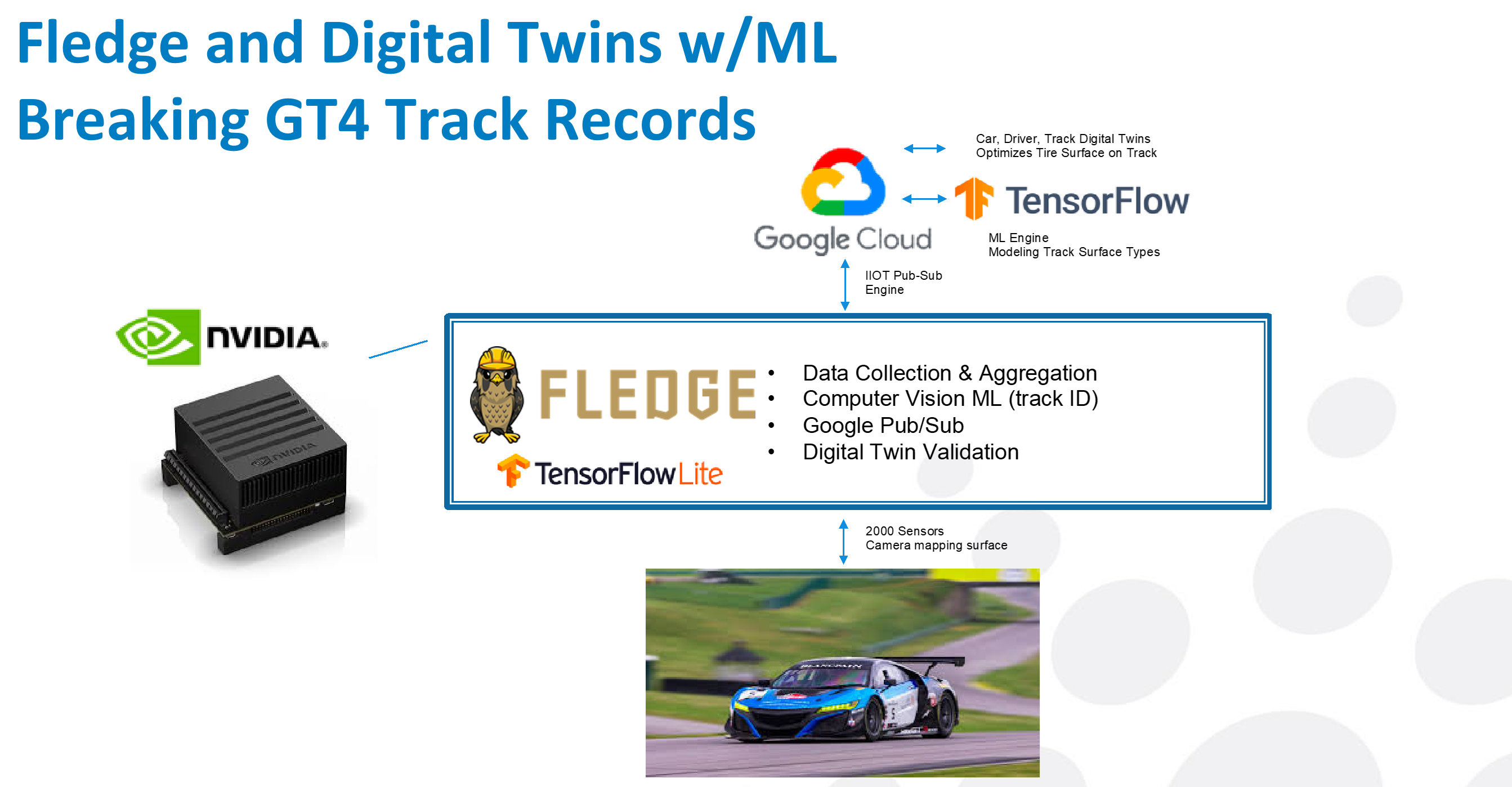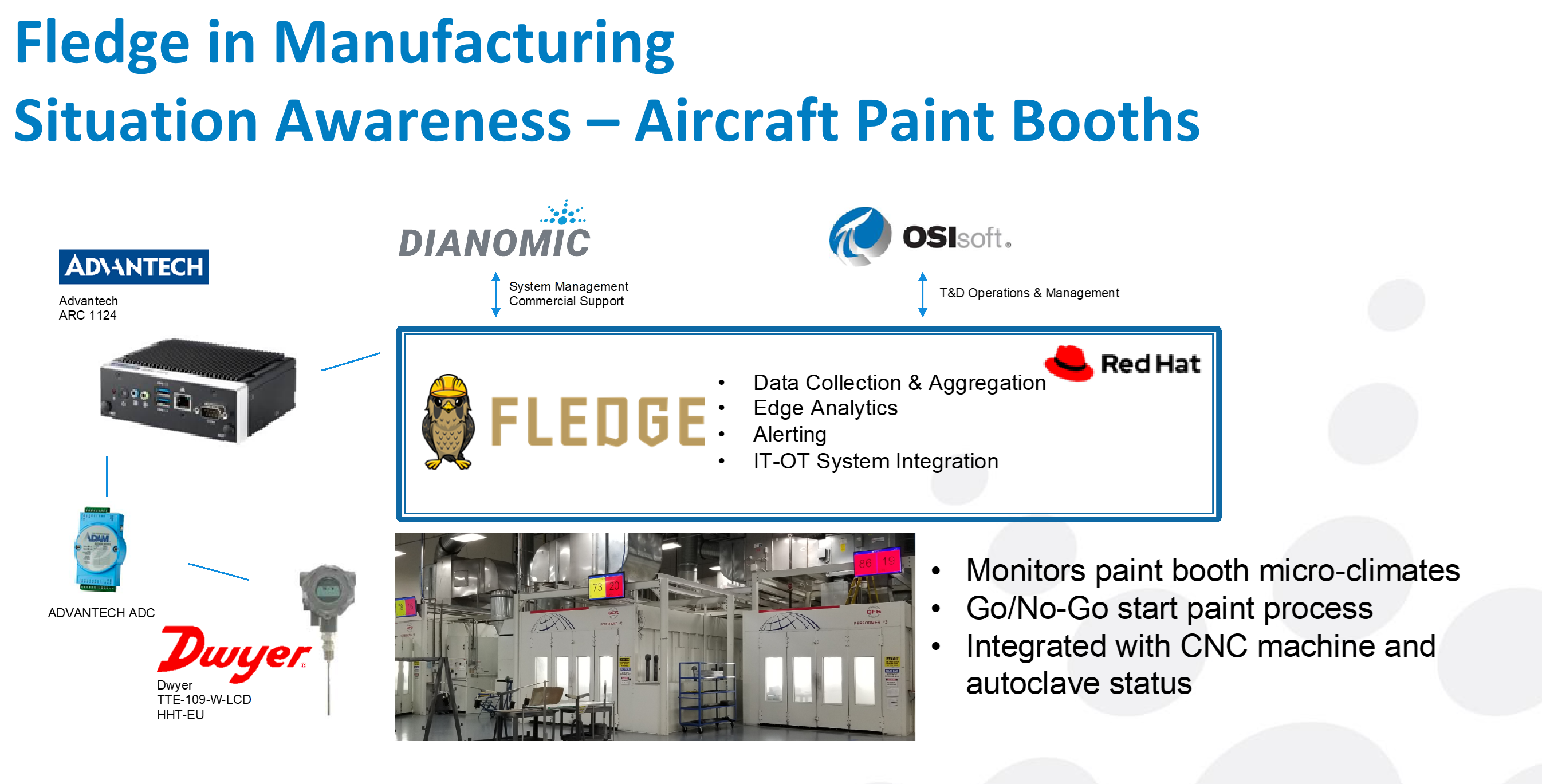Open Subsurface Data Universe (OSDU) Edge stack: An Oil & Gas Use Case
Owner: Daniel Lazaro <daniel.lazaro@aveva.com> Daniel Lazaro
LF Edge project(s) involved:
Fledge (Daniel Lazaro), EVE (Kathy Giori)
Description:
The OSDU Forum under The Open Group is developing an open source standards-based, technology-agnostic data platform that stimulates innovation, industrialized data management and reduces time to market. The OSDU Forum seeks to reduce data silos to enable transformational workflows, accelerate the deployment of emerging digital solutions for better decision making and create an open, standards-based ecosystem that drives innovation for the energy industry. The OSDU Edge group targeting intelligent edge analytics for oil & gas operators uses the LF Edge stack for drilling data analysis and edge to cloud integration. This showcase features a cross-consortia collaboration success story.
Video/presentation:
Call to action:
Please join our Fledge TSC meeting: https://lists.lfedge.org/g/fledge-tsc/calendar
How to install/use:
Current Adopters (or vaguely describe the adopter such as a major telco provider):
Major Oil & Gas Operators, OSDU, OSDU Edge Lab
Related talks/links:
...
Application of FLEDGE at Neuman Aluminium: An Industrial Use Case
Owner: Tom Arthur, Dianomic <tom@dianomic.com>
LF Edge project(s) involved:
Description:
AThe Neuman Aluminium Group is your global partner for high-quality aluminium solutions with 10 locations, over 3000 employees, over 200 years of experience. Multiple production facilities in Europe are controlled by a centralized MES (Manufacturing Execution System). The MES submits a production order to a facility. The machine processes the order and notifies the MES of the current production status. The MES sends data to a subsequent machine. Once the connection to the MES is lost, production will Continue as long as no new Input is required. The centralized nature of the system creates a critical dependency on the network connection!
The roadmap for connected production systems at Neuman includes open-source software stack to deliver device, core, application and supporting services for production equipment. Self-healing, scalable, up-gradable, flexible, platform independent and offline capable edge devices. Knowledge or/and ML driven smart edge devices to semi- autonomously control machine, forward data and adjust production equipment.
Fledge_Community_Presentation_22_09_2021.pptx.pdf
Video/presentation:
Meeting Recording - Minute 14:00
Call to action:
Please join our Fledge TSC meeting: https://lists.lfedge.org/g/fledge-tsc/calendar
How to install/use:
Current Adopters (or vaguely describe the adopter such as a major telco provider):
Related talks/links:
Meeting Recording - Minute 14:00
Fledge_Community_Presentation_22_09_2021.pptx.pdf
...
UC Davis and Opus One Using Fledge to Produce World Class Wine in Safer Conditions
Owner: Tom Arthur, Dianomic <tom@dianomic.com>
LF Edge project(s) involved:
Description:
During fermentation of juice to wine, the conversion of sugar to alcohol produces CO2 – about 64 liters of pure CO2 per 1 liter of juice. If not properly managed, the buildup of CO2 from fermentation actives can create a hazardous work environment. The OSHA permissible exposure limit of CO2 is 5000 ppm for 8 hours. Typically, CO2 in wineries is measured by a single or a few hard-wired sensors, however, the inherent variability of CO2 across a floor plan can be better monitored by a distributed network of sensors. Additionally, the use of batteries enables sensors to be easily installed anywhere in the winery. Temperature and humidity should also be measured, as these parameters give insight into the growth of unwanted microbials in the facility, the operation of the building HVAC and the evaporation of wine from barrels.
Originally developed by Dianomic Systems, Fledge joined LF Edge, an umbrella organization that aims to establish an open, interoperable framework for edge computing independent of hardware, silicon, cloud, or operating system. Fledge is an open-source Industrial IoT framework to collect sensor/machine data, transform, buffer and analyze the data on the edge, run edge ML models and reliably integrate the data with operational systems, OEE, MES, ERP, historians and the cloud. In a matter of weeks, UC Davis successfully built their custom sensor to cloud software IIoT solution using Fledge. A Custom printed circuit board (PCB) was designed and manufactured with the optimal components, form factor and price. A microcontroller with an integrated transceiver (CC1352r; TI) was used to create a Zigbee® mesh network. A low-power architecture was implemented to completely disconnect the microcontroller and sensors from the battery between measurements. A PCB antenna was designed to lower bill of material costs. A non-dispersive IR sensor measured CO2 while temperature and humidity were measured with a combined sensor from TI (HDC1080; TI).
Video/presentation:
Call to action:
Please join our Fledge TSC meeting: https://lists.lfedge.org/g/fledge-tsc/calendar
How to install/use:
Current Adopters (or vaguely describe the adopter such as a major telco provider):
UC Davis Robert Mondavi Wine center, Opus One
Related talks/links:
A hiker uses fledge
- A hiker used Fledge to collect temperature, humidity and air quality data while hiking on the beautiful Laugavegur trail in Iceland.
JEA IIOT Progress with FogLAMP and PI System with Live Q&A
JEA compiled a list of IIoT use cases and business needs from electric generation, T&D, water, and wastewater and realized we needed a common approach for tackling similar needs from diverse business units, all running different Industrial Control Systems. FogLAMP provides a common framework for collecting the data and delivering it to PI and our analytics layer. This framework is open, standards-based and endorsed by the Linux Foundation. Alternatively, trying to integrate IIoT across multiple different proprietary DCS, PLC, and SCADA platforms was ominous and likely not even possible. FogLAMP offers a vendor-neutral alternative to the existing silos. JEA is taking an enterprise-wide approach to IOT and FogLAMP is a way to adopt a more modern standards-based and decoupled architecture for the future. Our first implementation monitors substation transformers and implements predictive maintenance using Dynamic Ratings B100 and disolved gas analyzers connected to FogLAMP running in a Cisco CAT 9300.
Rob Raesemann has an Electrical Engineering degree from the University of Florida and is one of the most experienced OSIsoft PI System consultants in the industry. He has 24 years of experience with PI across a wide range of industries.He bills himself as a "Full-Stack PI Guy" with experience ranging from architecting global PI deployments to developing applications using PI data. He has given several presentations at OSIsoft PI World and routinely competes and places in OSIsoft sponsored Hackathons where he has developed solutions using OSIsoft's PI System Access software suite of the PI AF SDK, PI Restful WebAPI using Microsoft .NET/C#, Angular Javascript Web Framework, and Python. He has been on the forefront of IIOT development as an early adopter of the FogLAMP framework developing Docker containers to be deployed on Cisco switches running the Cisco IOx IOT extensions. He has developed and contributed plugins to the FLEDGE project.
JEA IIOT Progress with FogLAMP and PI System with Live Q&A
Winning GT3 Racing with LF Edge’s Fledge
Gradient Racing is a professional auto racing team based in Austin, Texas. One of Honda’s customers for NSX GT3 Evo, Gradient is committed to using cutting edge technology to gain an edge in GT racing.
Modern race cars have thousands of adjustable parameters in their suspension, aerodynamics, transmission and other systems. Finding the perfect configuration of these parameters for a given driver, track and race strategy is key to winning races. In GT racing, this has been more art than science, with drivers making multiple test runs and working with the race team to adjust the car based on feel.
Like Formula One and Nascar, Gradient wanted to bring state-of-the-art simulation technology to bear on this problem, believing that it would allow them to configure the car far more precisely. To do this, they engaged Motorsports.ai, a leader in racing modeling.
Motorsports.ai’s goal was to create a full simulation environment of the race: a simulated driver, a simulated car and a digital twin of the track. While car simulation software was commercially available, Motorsports.ai decided to use machine learning technology to develop an AI driver that would react to conditions in the same way as Gradient’s human driver.
Motorsports.ai deployed the Linux Foundation’s Fledge for three functions. First, to collect the massive amount of data required to train the machine learning system. Second, to validate the race simulations of car, driver and track. Last, to help validate the digital twin of each race track. Originally developed by Dianomic Systems, Fledge joined LF Edge, an umbrella organization that aims to establish an open, interoperable framework for edge computing independent of hardware, silicon, cloud, or operating system, last year. Fledge is an open-source Industrial IoT framework to collect sensor data, enhance it with meta information, run ML models on the edge and reliably transport data to central or cloud-based processing systems. In a matter of weeks, Motorsports.ai developed the plugins needed to interface Fledge with the race car’s CAN Bus and Eclipse Cyclone DDS interfaces to over 2000 in-car sensors.
Gradient used the Motorsports.ai simulation to optimize suspension and alignment settings for every race in 2019. The simulation enabled far more rigorous tuning than their previous manual method. Instead of building a configuration based on a few laps and driver “feel”, they were able to run tens of thousands of simulations using precise measurement. They were able to investigate conditions that had not yet been experienced on the actual track and ensure that they could compete effectively in them.
Winning GT3 Racing with LF Edge’s Fledge
General Atomics
A large defense and technologies company with more than 15,000 employees worldwide. They are a leading manufacturer of unmanned aerial vehicles (UAVs). These UAVs can be remotely piloted from anywhere in the world and are capable of very long duration, high altitude flights while carrying significant payloads. They are widely used by world militaries for intelligence, surveillance and offensive operations as well as by civilian organizations for border enforcement, firefighting and scientific applications.
...
Link to Recording (Disclaimer: Foglamp instead of Fledge is used since it predates Fledge 1.8).

